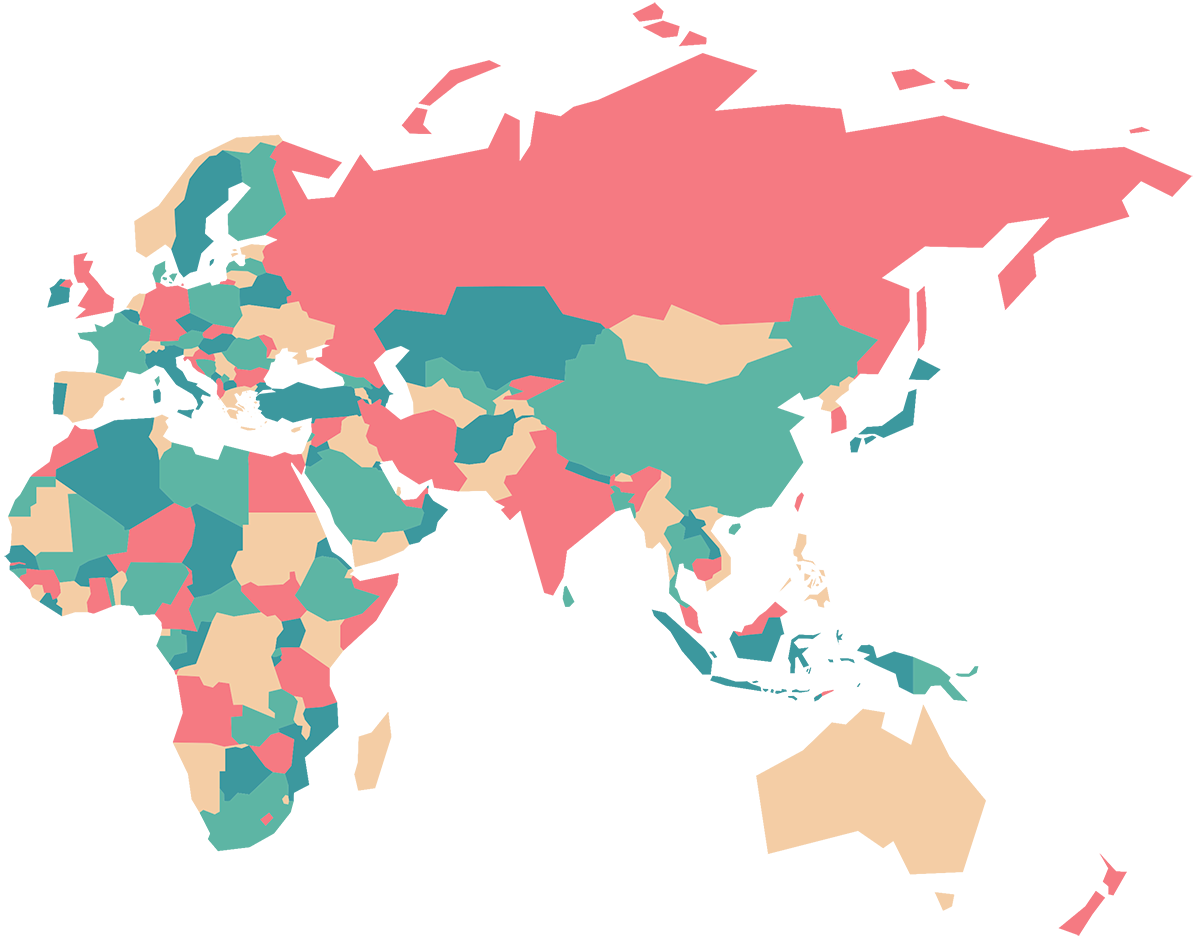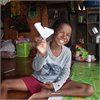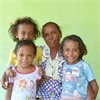
Our mission
Our Vision is a World where Leprosy is Defeated and Lives are Transformed.
The Leprosy Mission is the world’s oldest and largest leprosy-focused organisation.
OUR VISION:
Leprosy defeated, lives transformed
OUR MISSION:
Following Jesus Christ, we seek to bring about transformation; breaking the chains of leprosy, empowering people to attain healing, dignity, and life in all its fullness.
Our Christian identity and values are at the heart of who we are and everything we do. Because we follow Jesus Christ, we value Compassion, Justice, Integrity, Inclusion, and Humility.
- Compassion: We have sympathy and sadness for those who have suffered from leprosy and we have a desire to help
- Justice: We believe all people should be treated fairly
- Integrity: we believe in the value of being honest and we have strong moral principles that we will not change
- Inclusion: We stand by the principle that everyone should be able to use the same facilities, take part in the same activities, and enjoy the same experiences, including people who have a disability, leprosy, or other disadvantages
- Humility: We hope to be the hands of God on this earth and we are here to follow God's guidance
OUR GOAL: NO CHILD WITH LEPROSY BY 2035
We will do everything we can so that by 2035, children can be born into a world without being at risk of leprosy.
Our story
We are one of New Zealand's oldest charities being in New Zealand for over 100 years. We have a dedicated staff based in Auckland and raise funds and awareness for people affected by leprosy around the world.
The Leprosy Mission was founded in 1874 by Irish missionary Wellesley Bailey. On a mission in India he met a group of people sitting under a tree. They had been banished from their village because of their leprosy.
Deeply moved, he returned home determined to make a difference. He declared, “If there was ever a Christ-like work in the world, it is to go amongst these poor sufferers and bring them the consolation of the gospel.”
Nearly forty years later he visited New Zealand with his wife Alice in 1912 and inspired local people to begin their own support chapter. The Leprosy Mission New Zealand was formed to raise awareness about leprosy and provide financial support to bring hope and healing to people affected by the disease.
Leprosy was once believed to be a curse
The Leprosy Mission is part of the Global Partnership for Zero Leprosy, joining with organisations like the World Health Organisation (WHO), working towards ending leprosy transmission by 2035.
Some communities still believe that and shun people with leprosy. It is just a bacterial disease, though uncured it causes immense damage and disability Leprosy – also called Hansen’s Disease – is caused by bacteria attacking nerves in our extremities, such as hands, feet, face, eyes. Leaving them numb.
IT IS VERY HARD TO CONTRACT LEPROSY
It is only mildly infectious. You would have to spend years with an infected person before you were likely to catch it. This is why it tends to affect families and was once believed to be hereditary. It is not. You can’t catch leprosy by touching someone. It spreads through moisture droplets in the air, from someone who has not started their cure.
Leprosy is now restricted to the world’s most disadvantaged people and places
95% of people may be naturally immune, but immunity is lowered by poor nutrition, sanitation, and hygiene.
UNTREATED LEPROSY CAUSES SEVERE LIFELONG DISABILITIES
Fingers and toes to claw inwards. In the eyes, it can lead to infections, cataracts and even preventable irreversible blindness. Fingers and toes may claw inwards. In the eyes, leprosy can lead to infections, cataracts, and even preventable irreversible blindness. This often occurs because the disease damages the nerves that control blinking. Without the protective reflex of blinking, ulcers and infections in the hands and feet become common. When the skin loses feeling, people may ignore normal bruises, cuts, and burns, allowing these unprotected wounds to become severely infected, which can lead to disfigurement and amputations.
A common complication is footdrop, as the nerve that controls our walking is destroyed. Without being able to automatically raise our toes as we walk, our feet get bruised and scraped, leading to infections that in turn lead to amputations or even death. That is why one of the most effective aids is a pair of protective sandals.
Better still, is to stop leprosy before it can cause this harm.
Leprosy can now be cured
The Leprosy Mission is committed to the safeguarding and protection of everyone we work with, including beneficiaries, volunteers, TLM staff and the staff of partner organisations.
For all of history, there was no cure for leprosy. That is what made leprosy healings in the Bible such remarkable miracles. Leprosy was an irreversible life sentence – often a death sentence. Today, though, we have a cure: six months to a year of a specific combination of medications.
Multi-Drug Therapy (MDT) has a success rate around 99%
If leprosy is found and cured early permanent disability can be completely avoided
So public awareness programmes are a vital element
That is why we also educate local health workers, doctors, nurses, paramedics, rural medical practitioners, and family planning staff about leprosy - so they can identify cases and refer people for treatment as quickly as possible.
Within 48 hours of treatment beginning a person is no longer infectious
This is very significant because there is no reason a child receiving MDT needs to be kept away from school, or an adult kept from earning their living. This still does happen though, because …
The ancient stigma and fear of leprosy remains its greatest burden
Some communities retain deep fear of leprosy and the disabilities it causes, based on ancient myths, superstitions and even discriminatory laws that persist to this day. People in such a community may not believe that MDT can set someone free from leprosy.
As a result, people affected by leprosy are often rejected by families, friends, employers, and communities. Many lose jobs and struggle to find a livelihood. Others lose their homes and children are excluded from school.
Because of this stigma, many people with leprosy are afraid to come forward for treatment. They hide in shame and isolation, until the disease has caused deep damage to their lives.
When people do begin treatment, the death of the bacteria in their bodies can cause an extreme inflammation called Leprosy Reaction, with pain, sickness, swelling and fever. These people require a lengthy hospital stay to complete their treatment. They cannot afford this level of care themselves, so selfless people like you generously support their care.
Where your support works
As a Leprosy Mission supporter, your gifts, donations, prayers, and all other forms of your support are working in some of the poorest and remote areas in the world.


Bangladesh
Leprosy is still a major health threat in one of world’s poorest, most crowded countries.


Bougainville
Successful community health since 1999


Ethiopia
Tackling leprosy with local partners: ENAPAL.


India
Around 70 percent of people diagnosed with leprosy live in India


Indonesia
Reducing world’s third worst rate of new leprosy cases.


Kiribati
Preventative health, raising awareness on issues like leprosy, TB and malaria.


Nepal
3,000+ people receiving leprosy treatment.


Niger
Medical treatment for people affected by leprosy


Papua New Guinea
Working with TLM PNG to reduce leprosy’s burden: medical, social, economic.


Timor Leste
Partners with TLM TL to reduce leprosy’s medical burden and social cost.


Zambia
Medical support for people affected by leprosy

Our Local Team
Andre Stuart
Board Chair
Gillian Whitley
Executive Director
Jasleen Kler
International Programmes Manager
Martin Malkaney
Finance Manager
Our Board
Andrew Stott
Blair Matheson
Graham Mills - Treasurer
Jo Burnet
Nadine Rutter
Nicholas Fagerlund
Rev Kathleen Gavin
Our Partners
The Leprosy Mission New Zealand is a vital member of the Leprosy Mission Global Fellowship. Through a robust and enduring partnership with the New Zealand Government's Ministry of Foreign Affairs and Trade, we implement sustainable programs across the Asia-Pacific region. These initiatives encompass health, disability, livelihood development, gender and inclusion, WASH (Water, Sanitation, and Hygiene), education, community governance, and advocacy.
Refund Policy
The Leprosy Mission New Zealand (LMNZ) accepts charitable donations in New Zealand dollars on this website. If you are donating using a credit card from another country, your account will be charged in NZD.
The Leprosy Mission New Zealand has developed a donation refund policy as part of our commitment to honouring and respecting the financial contributions to help people affected by leprosy. We recognise the importance of donations and want to ensure we establish appropriate principles of transparency and fairness regarding the management of refunds.
Any request for a refund of contributions already donated to Leprosy Mission New Zealand (LMNZ) by a supporter will be considered and determined on a case-by-case basis. Refunds will be returned to the bank account or credit card originally debited.
When a request for a refund is received, an assessment of the reason given for the refund request will be undertaken by a member of the Supporter Services team. The following reasons will usually be considered favourably:
- An error has been made by LMNZ
- A donor's banking details are fraudulently obtained and used
- LMNZ has received a donor's details in error
- A donor has previously requested that regular debits be cancelled, however, the debits have continued. The refund will be to the maximum of the last debit amount unless a donor can provide proof of the original cancellation request
The Leprosy Mission New Zealand will fully examine all requests for refund and endeavour to ensure that genuine errors are rectified, however, we are under no obligation to give refunds and the decision on refunds will be discretion of The Leprosy Mission New Zealand.
If a supporter is not satisfied with the outcome of the decision to refund, a further request can be escalated to the Finance Manager by letter or e-mail.
If it is agreed that a refund is to be made a donor will be refunded within ten working days of the decision.
If you have any questions about this policy or wish to seek a refund of a charitable donation you have made, please contact us at supporterservices@leprosymission.org.nz or call us on 0800 862 873.
Member Rules
The Incorporated Societies Act 1908 Rules of The Leprosy Mission New Zealand Incorporated - Download File
